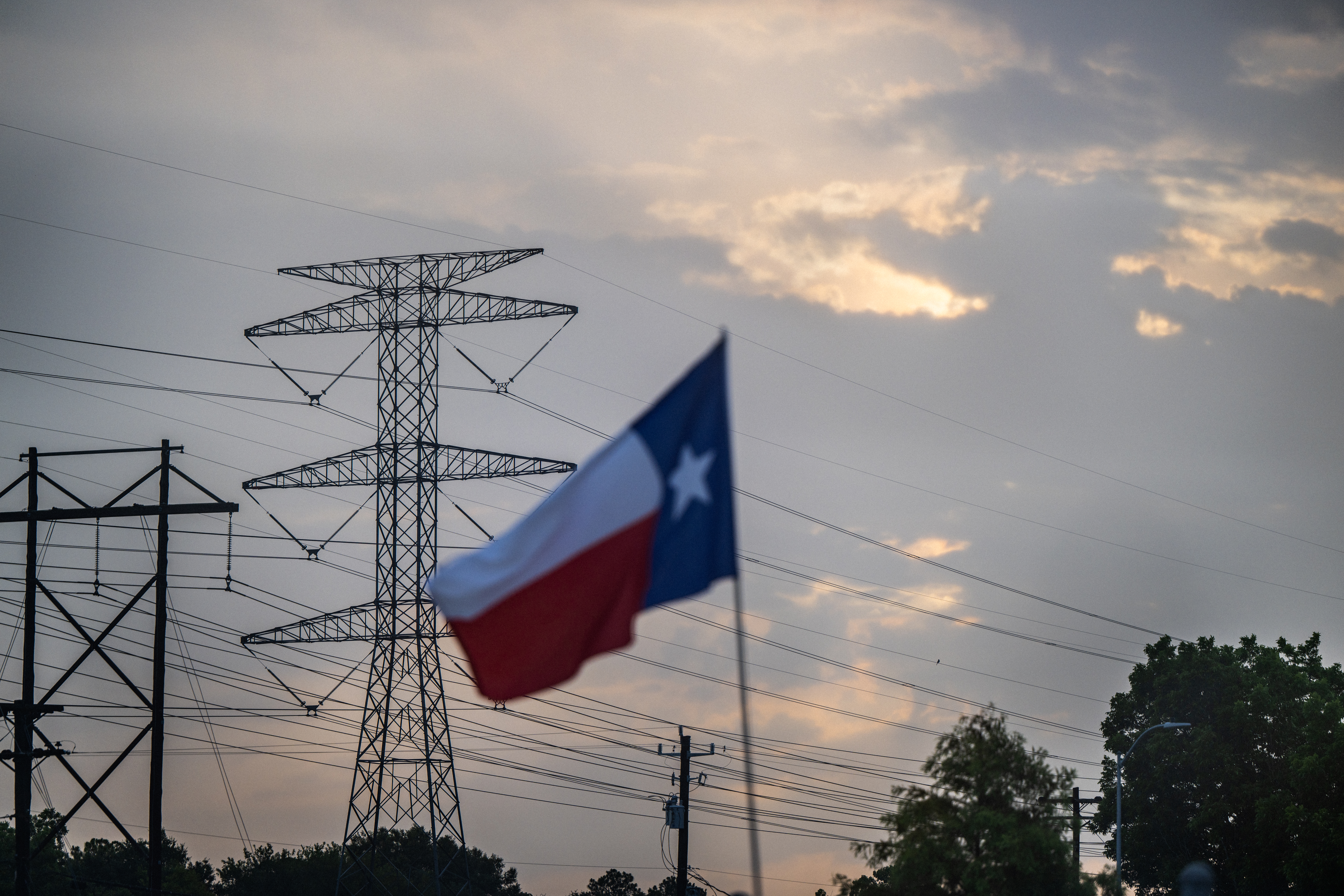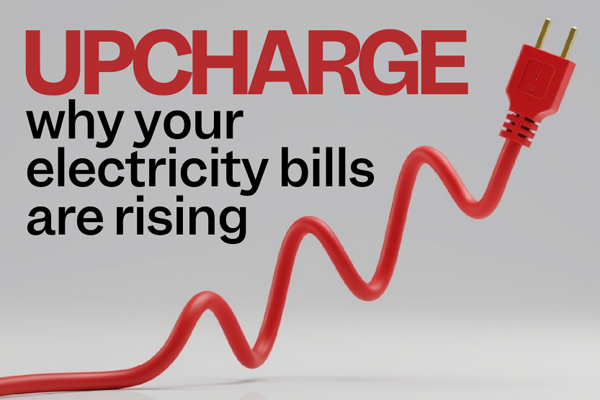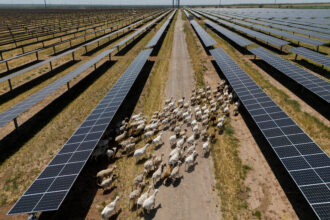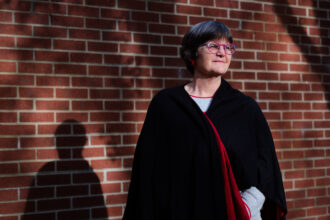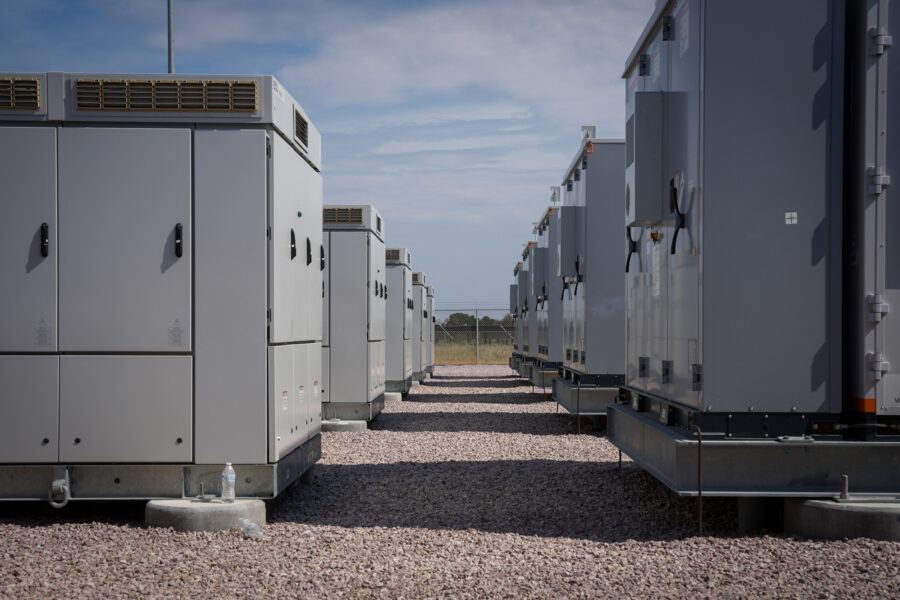Texas Gov. Greg Abbott signed a law in June that empowers the state’s grid operator to remotely disconnect data centers and other large energy users if the grid is under extreme stress. The so-called “kill switch” is just one aspect of the wide-ranging state legislation meant to govern the growing number of energy-intensive supercomputer warehouses being planned and built out across the state.
The legislation comes as Texas, like other states across the country, tries to balance remaining an attractive place to do business for the booming data center industry while addressing the challenges that come with the huge amounts of electricity the facilities demand, especially when grid capacity has been maxed out by extreme summer heat or freezing winter storms.
Much of the legislation around energy and the grid in recent years has aimed to prevent a rerun of Winter Storm Uri in 2021. During the dayslong freeze, millions of households went without power and at least 246 people died, while some industrial sites’ lights stayed on.
The new law, Senate Bill 6, which currently applies to electricity customers using at least 75 megawatts—equivalent to a medium-sized power plant—aims to shift transmission costs to the large load users, so upgrades and new connection costs aren’t paid through residential and small commercial customer rates.
The legislation also looks to establish grid reliability protection measures and add credibility to electricity demand forecasting.
As with other aspects of Senate Bill 6, the Public Utility of Commission of Texas (PUC), the Electricity Reliability Council of Texas (ERCOT) and other stakeholders are still working out how the new responsibilities and rules around data centers will be implemented. Public comment periods for stakeholders on S.B. 6 rulemaking close this month.
Both the energy and data center industries are expected to participate in and follow the rulemaking closely, as the two sectors have grown accustomed to the free trade of energy with few state-imposed restrictions.
As the bill made its way through the legislative process, both industries warned that the new oversight measures, requirements to shoulder costs relating to grid reliability and disclose private power deals, could discourage business in Texas.
Attorneys for Crusoe Energy Systems, the artificial intelligence infrastructure company behind the massive Stargate Project in Abilene, said in a state filing that it would be unfair for ERCOT to introduce another approval requirement for private power agreements between Stargate’s users and its power suppliers when they had no time to plan for it. It would subject project developers who have invested billions and have obligations to meet certain timelines to a 180-day delay, the attorneys wrote. The Stargate proposal, involving OpenAI, Softbank and Oracle, is set to become the largest data center project in the world.
Crusoe’s attorneys are also seeking a definition of a new large load user from the PUC — asking whether those already in the interconnection queue with planned co-located generation will be subject to the new rules.
The large load interconnection queue faced by ERCOT, Texas’ power grid, is now dominated by data centers, according to data from ERCOT’s latest system planning and weatherization update. Compared to September 2024, ERCOT is now tracking more than three times as many large load interconnections, with nearly 69 percent of 189 gigawatts of large load requests coming from data centers. By contrast, in May 2024, non-cryptocurrency data centers made up less than half of the large power demand requests.
The large load requests in the ERCOT queue—189 gigawatts—equal about 40 percent of the nation’s estimated electricity consumption for 2025, according to the U.S. Energy Information Administration.
With such eye-popping growth, there’s been suspicion that the figures are artificially high. A possible explanation for why that is: Grid operators and utilities have complained that developers are pitching duplicative interconnection requests to multiple sites in or outside of Texas as they wait to see where a green light first appears for developments that may never materialize. This complicates load forecasting and infrastructure planning.
Also, a 2023 law change required ERCOT to include all prospective large-scale power users in demand projections without fully vetting each project. Before that, ERCOT did not count projects in early stages of development until specific financial commitments were made.
S.B. 6 seeks to address unserious large-load projects bloating the queue by imposing proof of financial commitments, including an interconnection studies fee of at least $100,000 and proof that a developer actually controls a proposed site.
But trying to nail down numbers about how much investment is required to be considered in grid planning will be tough, said Doug Lewin, a Texas energy consultant.
“What demonstrates significant commitment?” Lewin asked. “That’s a huge question.”
One firm, Schaper Energy Consulting, whose clients account for more than nine gigawatts of large load projects in ERCOT, suggested in a comment filed to the PUC that the interconnection study fee should be between $150,000 and $300,000, site control be either ownership, an executed lease or an exclusive option to purchase or lease the land, and an interim security requirement of $3,000 per megawatt of requested capacity.
For Woody Rickerson, chief operating officer of ERCOT, the new rules outlined in S.B. 6 are exemplary of why Texas is an opportune place for the growth of data centers, particularly those servicing artificial intelligence. Grid operators and regulators want to move quickly, he said at a data center industry conference in San Antonio on Sept. 30.
Rickerson said in recent years, they’ve proven they can transform the grid through the widespread adoption of renewable energy in ERCOT. The state’s independent grid now hosts more solar, wind and batteries than any other state in the country, with operators saying it can grant customers access to large amounts of power without the bureaucracy other grids face.
“We can change. We can adapt,” Rickerson said. “We can put new processes in place more quickly.”
The PUC staff expects to complete rulemaking on various portions of the law’s implementation, such as private agreements between power plants and data centers and what constitutes a significant financial commitment to enter ERCOT’s large load interconnection queue, throughout this year and 2026. Those new rules would determine when and how the grid operator would cut off power to data centers in an emergency and how to manage costs for grid infrastructure upgrades.
S.B. 6 requires the PUC to consider whether its ratemaking practices, in place for more than two decades, are recovering transmission costs from the appropriate customers.
The current system largely incentivizes big customers to save energy during four 15-minute periods each year when capacity on the grid is tight. The amount of electricity they use during these four instances is used to calculate their bill for the following year.
While this method benefits large load users, including San Antonio’s CPS Energy, one of the nation’s largest city-owned utility companies, it exposes the utility’s residential customers to higher net costs and is less fair, attorneys for CPS Energy submitted to the PUC.
The Texas Advanced Energy Business Alliance cautioned the commission from shifting costs onto power generators. ERCOT has never asked generators to pay for transmission upgrades, a senior principal at the business alliance wrote, and doing so would undermine the “friendly” interconnection process for the worse, and delay investments in new power plants in Texas.
Rulemaking on this contentious part of the law is expected to continue until December 2026. Utility commission staff weighed in at a September meeting on whether limiting such considerations to customers using 75 megawatts or more is a good idea. The law gives the PUC authority to lower the threshold if the commissioners see fit.
Some analysts asked whether adopting the 75 megawatt standard would inadvertently create a gap and simultaneously incentivize loads to develop just below that threshold to avoid meeting financial obligations. Jessie Horn, an attorney for the PUC, said the staff suggested eliciting comments from projects above 25 megawatts might be the right number to get comprehensive feedback from across the industry regarding the rulemaking of S.B. 6.
But given that comment deadlines with stakeholders are due this month, the expectation for the initial year is to use the 75 megawatt threshold and revisit the figure later. PUC Chairman Thomas Gleeson said he’s most comfortable with the 75 megawatt threshold until the rulemaking is finalized, meaning only customers who need that much power or more would be subject to disconnection during extreme weather.
ERCOT can instruct utilities and large load customers to curtail operations or switch to on-site backup generators during an energy emergency when the grid is trying to shed demand. S.B. 6 also empowers ERCOT to install technology or necessary equipment to curtail the load before non-critical customers, such as data centers, are interconnected to the grid.
An industrial customer applies for and is awarded a “critical” classification when an interruption of their electric service would create a dangerous or life-threatening condition at their site.
Data center developers and industry members lobbied during the legislative session to make the kill-switch concept more palatable for facility operators by requiring a 24-hour notice before ERCOT could turn off their grid power. The PUC plans to have a proposal on how to implement this part of the rule in February.
S.B. 6 could address some of the issues ERCOT and its users encountered during Winter Storm Uri, said Chris Crosby, the CEO of Compass Datacenters, a design and construction firm for huge, “hyperscale” data centers and cloud providers. The legislation formalizes planned emergency events on the grid and addresses critical scenarios that may span a few hours each year, he said.
While Crosby sees the new legislation as positive, he knows that data center developers across the industry have mixed opinions about S.B. 6., including the Data Center Coalition, the industry’s leading lobbying group.
“While the final product did not fully address all our key concerns, the Data Center Coalition is appreciative that changes made to Senate Bill 6 during the legislative process intend to balance the need to support economic development with efforts to ensure the continued stability of the Texas electricity grid,” said Dan Diorio, vice president of state policy for the Data Center Coalition, in a statement to Inside Climate News.
The industry group plans to continue working with regulators and grid operators to ensure S.B. 6 is properly implemented and outlines efficient processes, Diorio said. There’s still concern about the uncertainty S.B. 6 imposes on projects already in the pipeline in Texas and on data centers that host digital infrastructure for health care, emergency services, security and banking, which could be disconnected.
Crusoe Energy Systems, the artificial intelligence infrastructure system company behind the massive Stargate Project in Abilene, submitted a comment to the PUC seeking a definition of a new large load user, and asking whether those already in the interconnection queue with planned co-located generation will be subject to the new rules. The Stargate proposal, involving OpenAI, Softbank and Oracle, would become the largest data center project in the world.
Attorneys for Crusoe Energy Systems Inc. said in a state filing that it would be unfair for ERCOT to introduce another approval requirement for private power agreements between Stargate’s users and its power suppliers when they had no opportunity to plan for it. It would subject project developers who have invested billions and have obligations to meet certain timelines to a 180-day delay, the attorneys wrote.
The legislation also creates new rules around co-located power generation at data center sites. Large load users often look to locate their projects near a power plant or develop their own gas-fired plants to lower transmission costs and secure a dedicated power supply.
There had been prior thinking that emissions-free energy sources like wind, solar and battery growth would power this new generation of digital infrastructure. But that vision isn’t panning out as speed and around-the-clock, dispatchable power take precedence. As developers rush to get online and ensure power reliability beyond the grid, concerns about powering data centers with renewable energy to reduce their carbon footprints have fallen in priority.
Under S.B. 6, any new, private agreement between an existing standalone power plant connected to the grid and a new large load customer of 75 megawatts or more, must notify ERCOT and undergo a study and obtain PUC approval. The grid operator has 120 days to evaluate the grid impacts and submit the study to the PUC, along with any recommendations. Then the regulatory agency has 60 days to impose conditions on the agreement as necessary to maintain grid reliability and transmission security.
Those conditions could require that, during certain events, data centers with behind-the-meter power would have to reduce load or the generator must make capacity available to ERCOT. It also makes them responsible for stranded transmission assets, or powerlines or substations, that age out earlier than expected or become financially unviable due to customers generating their own power onsite.
This story is funded by readers like you.
Our nonprofit newsroom provides award-winning climate coverage free of charge and advertising. We rely on donations from readers like you to keep going. Please donate now to support our work.
Donate NowNotably, it doesn’t include power plants that were co-located with a large load user at the time they were connected to ERCOT or if the customer is a majority owner of the generating plant. It’s intended to address concerns that data centers are effectively taking capacity from ERCOT through these private agreements.
According to the law, the PUC must require that any dispatchable capacity the power plants sold to ERCOT prior to entering an agreement with a large load user must be made available to ERCOT before an anticipated emergency.
It addresses concerns legislators have expressed that existing generators will sell output to data centers, making that generation unavailable to other customers and adds new regulatory steps for developing data centers in most of Texas.
Maria Faconti, a partner at K&L Gates’ power practice group, said the rulemaking around this aspect of S.B. 6 is top of mind for her clients. Faconti, who works with clients across the energy industry to navigate ERCOT’s regulatory environment, said she’s advised them to submit comments to the PUC.
“I’ve encouraged them to participate, to make sure that, not only are their voices heard, but that how they thought S.B. 6 would be implemented is actually how it ends up being implemented,” Faconti said.
In a submitted comment, Brock Petersen, the chief operating officer of Satoshi Energy, a data center and renewable energy developer, echoed the same concern about the unclear definition of a new large load user. Peterson also wrote that the rules for private power agreements between data center users and developers would disrupt project timelines and compromise investments made under the assumption of regulatory clarity.
With increased demand for electricity driven by larger loads over the past few years, Faconti and her clients knew regulation was inevitable. Before S.B. 6 passed, there were concerns about what the regulatory landscape would look like in a few years. Now, her clients, and their investors, have some clarity.
“I don’t think S.B. 6 has slowed development in Texas by any means,” Faconti said. “Good or bad, S.B. 6 has created some sort of parameters.”
About This Story
Perhaps you noticed: This story, like all the news we publish, is free to read. That’s because Inside Climate News is a 501c3 nonprofit organization. We do not charge a subscription fee, lock our news behind a paywall, or clutter our website with ads. We make our news on climate and the environment freely available to you and anyone who wants it.
That’s not all. We also share our news for free with scores of other media organizations around the country. Many of them can’t afford to do environmental journalism of their own. We’ve built bureaus from coast to coast to report local stories, collaborate with local newsrooms and co-publish articles so that this vital work is shared as widely as possible.
Two of us launched ICN in 2007. Six years later we earned a Pulitzer Prize for National Reporting, and now we run the oldest and largest dedicated climate newsroom in the nation. We tell the story in all its complexity. We hold polluters accountable. We expose environmental injustice. We debunk misinformation. We scrutinize solutions and inspire action.
Donations from readers like you fund every aspect of what we do. If you don’t already, will you support our ongoing work, our reporting on the biggest crisis facing our planet, and help us reach even more readers in more places?
Please take a moment to make a tax-deductible donation. Every one of them makes a difference.
Thank you,


